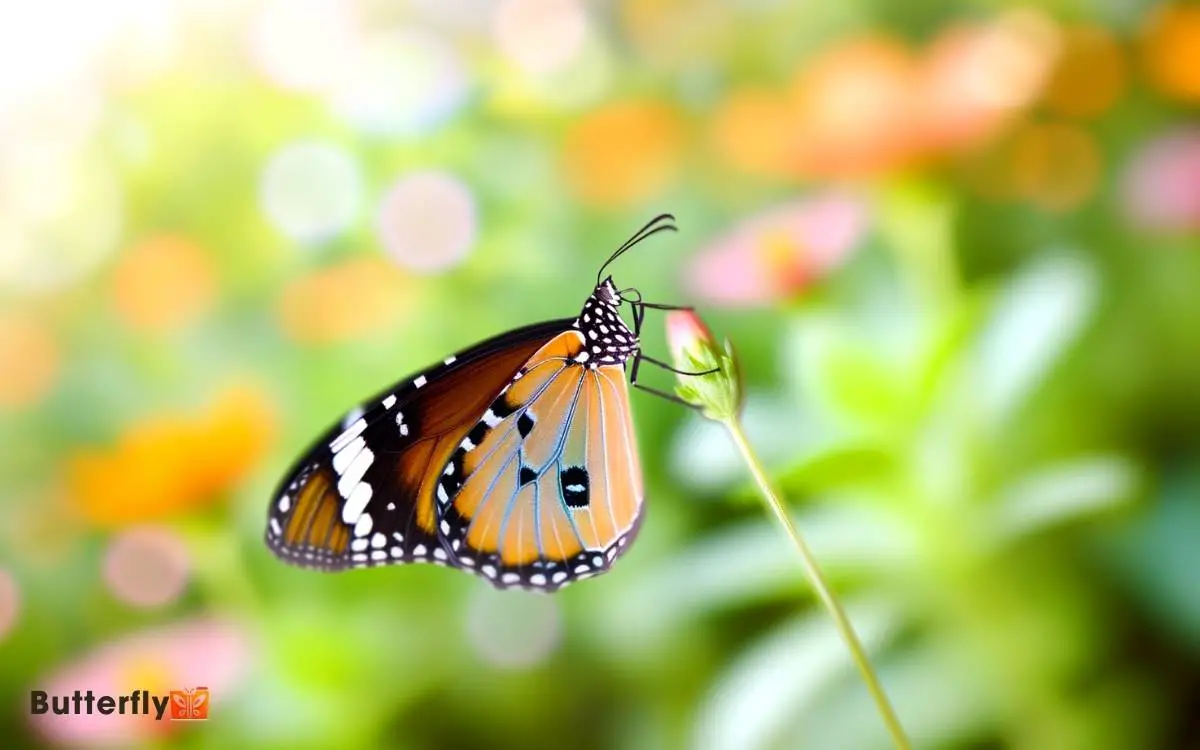How Many Legs Does a Monarch Butterfly Have? Discover!
Monarch butterflies, known as Danaus plexippus, have six legs attached to their thorax. Each leg consists of five segments: coxa, trochanter, femur, tibia, and tarsus, ending in claws for gripping surfaces.
These legs, adorned with sensory hairs, play vital roles in locomotion and sensory perception. Monarch legs also aid in detecting chemical cues essential for feeding and finding their way during their 3,000-mile migration.
If you’re curious about how these features impact their behavior and ecological interactions, there’s more to discover.

Key Takeaways
Monarch Butterfly Anatomy
Monarch butterflies, scientifically known as Danaus plexippus, exhibit a complex anatomy that includes a segmented body structure, specialized sensory organs, and intricate wing patterns essential for their survival and migration.
Their body is divided into three segments: the head, thorax, and abdomen. On the head, you’ll find compound eyes and two antennae used for navigation and sensing the environment.
The thorax houses powerful muscles that control wing movement. Monarch wings are covered in tiny scales, creating their iconic orange and black patterns, which play an important role in thermoregulation and predator avoidance.
Understanding the segmented structure and specialized features of monarch butterflies helps you appreciate their remarkable adaptations for long-distance migration and survival in diverse environments.
Leg Structure and Function
In addition to their intricate wing structures, monarch butterflies possess six legs, each attached to the thorax, that are crucial for locomotion, gripping surfaces, and sensory perception.
Each leg consists of five segments: coxa, trochanter, femur, tibia, and tarsus. The tarsus ends in a pair of claws, enabling the butterfly to cling to various surfaces.
Sensory hairs cover the legs, providing information about the environment and aiding in detecting chemical cues.
These legs aren’t only essential for walking and climbing but also play a critical role during feeding. When a monarch butterfly lands on a flower, its legs help stabilize its position while the proboscis extracts nectar.
Understanding these functions highlights the complexity of their anatomy and behavior.
Comparison With Other Insects
Many insects, like the monarch butterfly, also possess six legs, but their structure and functions can vary greatly.
For instance,
- Ants have powerful mandibles and sturdy legs adapted for digging and carrying heavy loads.
- Grasshoppers showcase enlarged hind legs designed for jumping, which differ notably from the monarch’s slender legs used primarily for clinging to plants.
- In beetles, you’ll observe hardened forelegs suited for burrowing or swimming in aquatic species.
- Compared to these, the monarch’s legs are less specialized but are equipped with sensory hairs to detect environmental cues.
This diversity underscores the evolutionary adaptations insects have developed to thrive in varied ecological niches.
Each leg type serves specific purposes, optimizing survival and functionality in their respective habitats.
Role in Migration
Each of the monarch butterfly‘s six legs plays an essential role in the complex and demanding process of migration. You might think their wings do all the work, but the legs are vital for several key tasks.
During migration, monarchs need to land frequently to rest and refuel. The legs, equipped with claws, allow them to grip various surfaces securely. They also help in foraging by manipulating flowers and leaves to access nectar.
Additionally, the sensory receptors on their legs provide critical environmental data, aiding in navigation and detecting suitable habitat conditions.
Without these specialized appendages, monarchs couldn’t successfully complete their long-distance journeys, which span up to 3,000 miles from North America to central Mexico.
Interesting Leg Facts
Monarch butterfly legs feature specialized sensory hairs that allow them to taste and feel their environment, providing essential data for survival.
These mechanoreceptors and chemoreceptors on their tarsi enable them to detect chemical signals from potential food sources.
When a monarch lands on a leaf, these sensory structures help it identify suitable host plants for laying eggs.
Monarchs possess six legs, but the forelegs are reduced and covered with sensory setae, rendering them almost vestigial. These modifications play a vital role in locating nectar while flying.
Additionally, the hind legs contain spurs, aiding in grasping surfaces. Understanding these intricate adaptations enhances our appreciation for their complex behaviors and ecological interactions.
Conclusion
You now know that a monarch butterfly has six legs, just like other insects. These legs aren’t just for show; they’re crucial for gripping surfaces during feeding and aiding in their iconic migration, much like the epic journeys in Homer’s tales.
Think about these details next time you see a monarch fluttering by. This intricate anatomy is a marvel of evolution, playing a pivotal role in its survival and epic travels.






